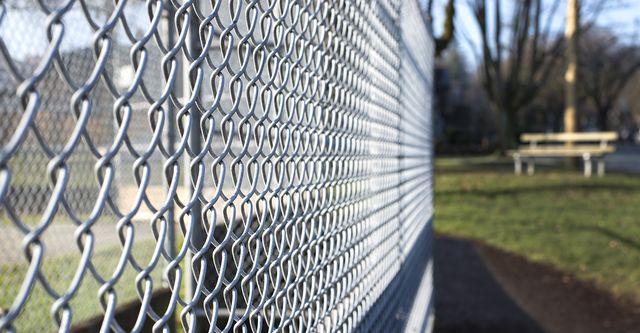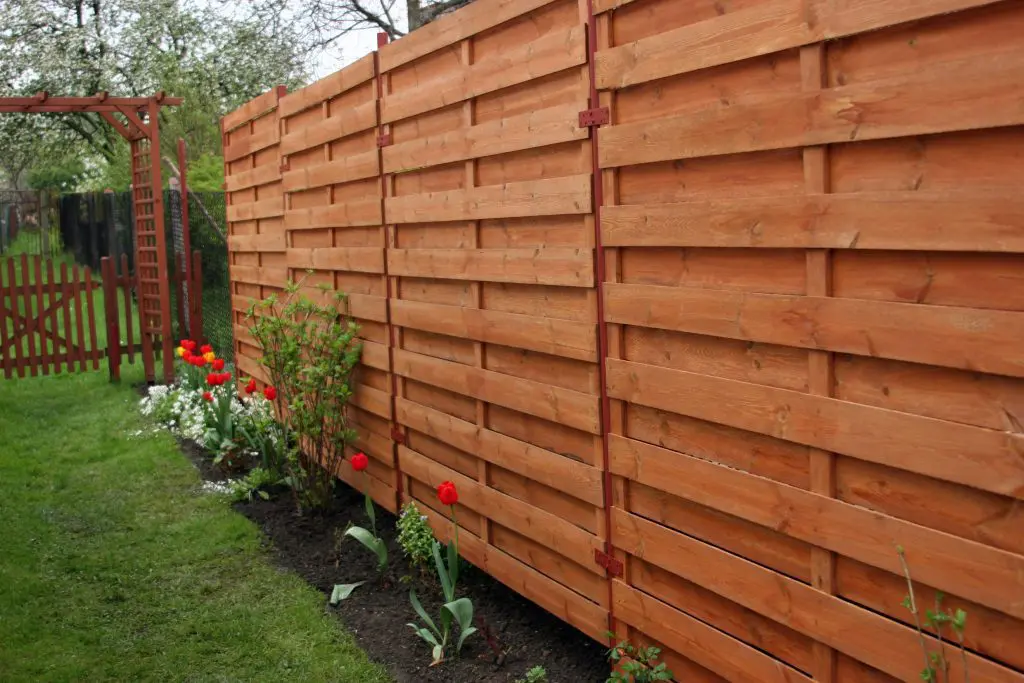Why a Qualified Fence Contractor Is Worth the Investment
Why a Qualified Fence Contractor Is Worth the Investment
Blog Article
How to Recognize Usual Problems That Call For Immediate Fence Repair Service
It is crucial to spot problems prior to they end up being larger problems when it comes to keeping your fencing. On a regular basis looking for signs of decaying timber, leaning panels, or corrosion can save you time and cash in the future. You may not realize exactly how climate and bugs can compromise your fence's stability. Let's check out the typical indicators that show your fencing needs instant attention, so you can keep your residential property safe and secure and looking its best.
Indications of Rotting Wood in Wooden Fences
Have you discovered your wooden fencing looking a bit shabby? It might be time to examine for indicators of deteriorating wood if so. First, analyze the base of the articles and panels for soft areas. That's a clear indicator of rot if you push on the timber and it feels mushy or falls apart. Next, try to find staining or dark areas on the wood-- these typically signal wetness damage. Take notice of any peeling off paint or surface, as this can reveal the wood to further decay. In addition, a pungent, moldy smell can show fungal growth. Don't fail to remember to evaluate connections and joints; if they hang or breaking down, the wood beneath is likely jeopardized. By catching these signs early, you can avoid extra considerable damage and keep your fencing standing solid. Regular upkeep is essential to expanding the life of your wood fence.
Leaning or Tilting Fence Panels
It's critical to comprehend what triggered it if you have actually seen your fencing panels tilting or leaning. This problem might show underlying architectural damages that needs your interest. Let's check out the typical reasons and the repair alternatives available to get your fence back fit.

Causes of Leaning Panels
It's typically an indicator of underlying problems that need attending to when you discover your fence panels leaning or tilting. One typical cause is inadequate drainage; excessive water can erode the dirt around the fence posts, weakening their assistance. Another offender might be solid winds or tornados that press versus the panels, especially if they're not effectively anchored. In addition, the natural settling of dirt with time can trigger messages to move, causing a tilt. Pests, like termites, can jeopardize the stability of wood panels, causing them to lean. Inadequate setup methods might result in panels not being securely set, leaving them vulnerable to leaning under pressure. Address these problems promptly to preserve your fence's stability.
Signs of Architectural Damages
Seeing tilting or leaning fencing panels can be disconcerting, as these concerns commonly indicate structural damage that needs prompt interest. When your fencing starts to lean, it might signal that the blog posts are changing or that the soil around them has actually deteriorated. Pay very close attention to voids in between articles or panels, as these can likewise recommend instability. deck builder. Furthermore, look for splits or splintering in the timber, which can deteriorate the total structure. It can compromise the honesty of the fencing if you see rust or rust on steel elements. Remember, ignoring these signs can result in much more extreme damage down the line, so it's necessary to examine the circumstance immediately and act prior to it aggravates
Fixing Options Available

Corrosion and Rust in Metal Fences
If you possess a metal fencing, you may observe rust and rust sneaking in with time, particularly if it's subjected to dampness. These concerns not just affect the appearance of your fence yet can likewise compromise its structural stability. To recognize corrosion, look for reddish-brown areas or spots, which indicate the steel is oxidizing. Rust can spread out rapidly if left untreated, compromising the fence and leading to expensive repairs.To take on corrosion and rust, you ought to cleanse the impacted locations with a wire brush and use a rust-inhibiting primer. When the guide dries out, think about painting the fencing with a weather-resistant paint to secure it further. Normal maintenance, such as evaluating for signs of corrosion and repairing paint as needed, will aid prolong your fence's lifespan. Addressing these concerns immediately assures your metal fencing remains strong and aesthetically appealing for many years ahead.
Fractures and Splits in Plastic Fence

Sources Of Plastic Damages
Plastic fencing is preferred for its sturdiness, yet it can still experience cracks and splits due to various elements. One significant reason is extreme temperature level fluctuations. When vinyl broadens in the warm and contracts in the cold, it can weaken the material with time. In addition, direct exposure to severe sunlight can lead to UV deterioration, making the plastic fragile. Physical influences, like unexpected crashes or hefty branches, can likewise produce cracks. Poor setup or using low-grade materials can worsen these issues. Additionally, age plays a role; older plastic secure fencing is much more susceptible to damages. Regular evaluations can aid you determine these aspects before they cause significant issues. Take proactive steps to assure your fence stays solid and undamaged.
Fixing Cracks Efficiently
Although fractures and splits in your plastic fencing can be worrying, addressing them quickly can protect against more damages and preserve the fencing's look. Initially, assess the dimension of the crack. For small fractures, a vinyl repair work set frequently consists of glue that can bond the edges, providing a seamless solution. Clean the area thoroughly before applying the sticky, guaranteeing it sticks effectively. For bigger splits, you may need to utilize a vinyl spot. Cut the patch to dimension, use adhesive around the edges, and press it securely onto the split. Allow it to treat as per the manufacturer's directions. Regular upkeep and quick fixings can expand your fence's life expectancy, maintaining it looking wonderful for years ahead.
Loose or Missing Fence Articles
Missing or loose fencing posts can threaten the stability of your whole fencing structure. If you notice any type of posts Web Site leaning or tottering, it's essential to address the concern immediately. Check for any indicators of movement, as this can cause additional damages with time. You can conveniently assess the problem by providing each article a mild shake-- if it feels unstable, it's time to take action.For missing out on articles, you'll require to change them immediately to maintain your fence's integrity. Make certain they're safely secured in the ground with concrete or gravel for added stability when you install brand-new posts. If a post hangs, tighten it by including additional assistance or driving it deeper into the ground.Ignoring these issues can lead to bigger troubles, like voids in your fence or even total collapse. So, watch on your articles and remain proactive concerning fixings!
Damages From Climate and Natural Elements
Weather condition and all-natural components can ruin your fence, bring about different kinds of damages that require timely attention. Hefty rain can create timber to rot, making it weak and unstable. Snow build-up might bend or damage panels, while strong winds can root out fence messages or cause sections to lean.If you observe splits or splintering in wood fencings, it suggests drying as a result of intense sunlight exposure. Metal fences can corrosion if protective coatings wear off, particularly in coastal or humid areas.Inspect your fencing routinely after tornados or severe weather to catch any kind of damage early. Addressing these issues promptly can save you from expensive repair work down the line. Do not wait until a little problem transforms into a major one; stay proactive and keep your fence leading form to maintain both capability and visual charm.
Bug Infestation and Termite Damage
When you observe indicators of bug invasion or termite damages, it's vital to act swiftly to protect against more damage. Search for mud tubes along your fence or hollow-sounding timber, as these indicate termites go to work. You could also see little holes or frass, which is termite droppings appearing like sawdust. If you identify any of these signs, it's time to evaluate the damage.Don' t wait up until it's far too late; parasites can compromise your fencing's stability. Check the surrounding location for ants or beetles, as they may be adding to the trouble. If you think an invasion, take into consideration contacting an insect control specialist to verify and treat the issue.Repairing or changing afflicted areas of your fencing promptly not only restores its toughness however additionally avoids bugs from spreading out additionally. Stay alert to keep your property pest-free and protected.
Frequently Asked Inquiries
How Frequently Should I Check My Fence for Damages?
You ought to inspect your fencing at the very least two times a year, preferably throughout spring and fall. Regular checks assist you detect damages early, conserving you time and cash on repairs while keeping your building's look and safety.
Can I Repair a Fencing Myself or Hire an Expert?
You can most definitely fix a fencing on your own if you have the right tools and skills. Working with a professional warranties quality work and saves you time, specifically for complex repairs or considerable damages.
What Tools Are Required for Basic Fence Fixings?
For standard fence repairs, you'll need tools like a article source hammer, screwdriver, pliers, a saw, a level, and measuring tape. deck builder. Depending on the repair service, you might additionally call for nails, screws, or replacement boards
Exactly How Much Does Fence Repair Service Commonly Cost?
Fencing repair service prices vary widely, but you can anticipate to pay in between $200 and $1,500 depending upon products, labor, and extent of damage. It's smart to obtain several quotes for the best bargain.
When Is the most effective Season for Fencing Repairs?
The very best time for fencing fixings is during light climate, normally in spring or very early fall. You'll stay clear of extreme temperatures, making it much easier to work and ensuring the materials established appropriately for lasting durability (deck builder). Observing leaning or tilting fencing panels can go to these guys be alarming, as these concerns often indicate structural damages that requires immediate attention. Loosened or absent fencing posts can threaten the stability of your entire fencing structure. Snow accumulation could flex or damage panels, while strong winds can root out fencing messages or trigger sections to lean.If you notice fractures or splintering in wood fences, it's an indicator of drying out due to intense sun direct exposure. Metal fences can corrosion if protective layers wear off, specifically in seaside or damp areas.Inspect your fence consistently after tornados or severe weather to catch any type of damages early. Fencing repair expenses differ commonly, but you can anticipate to pay in between $200 and $1,500 depending on materials, labor, and extent of damage
Report this page